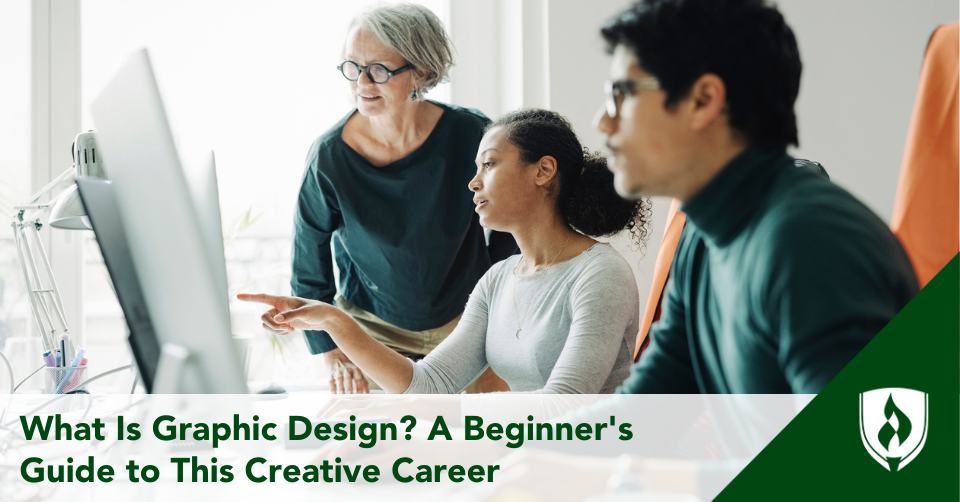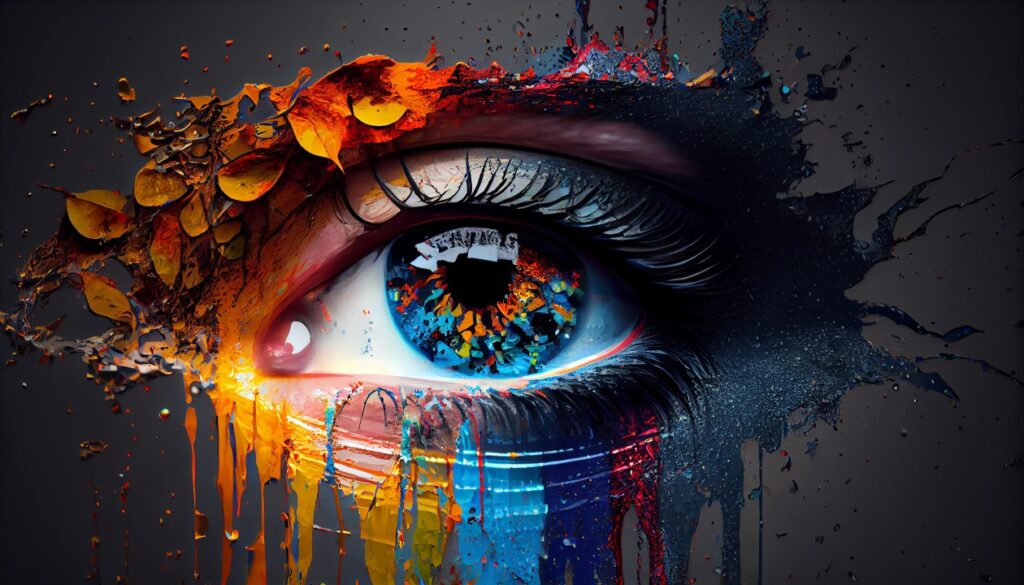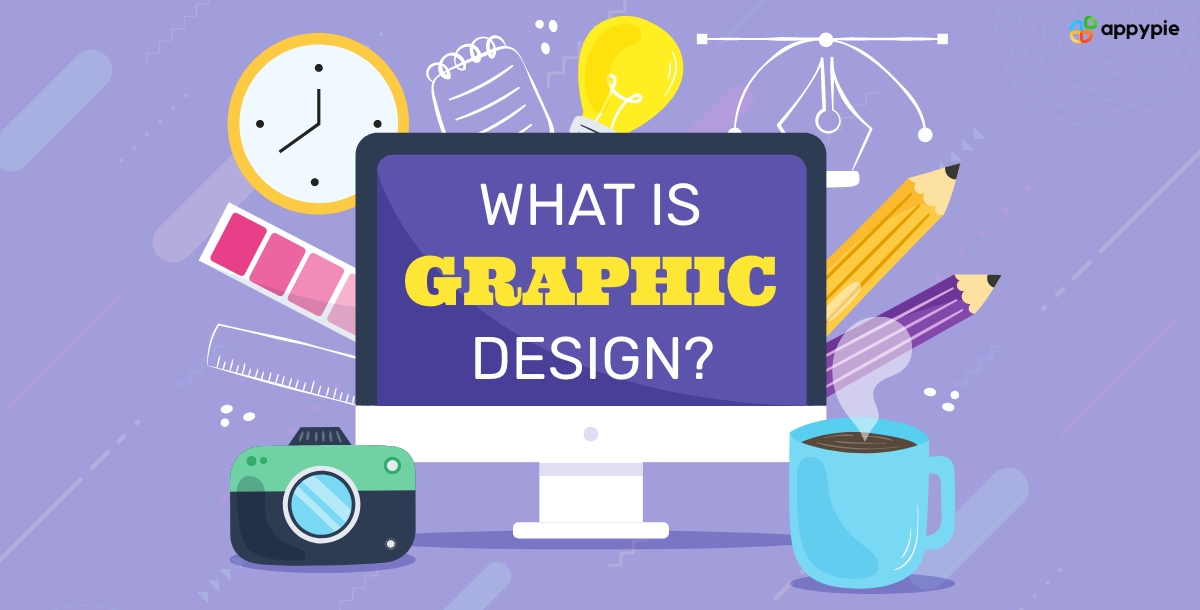Graphic design is a craft where professionals create visual content to communicate messages. By applying visual hierarchy and page layout techniques, designers use typography and pictures to meet users’ specific needs and focus on the logic of displaying elements in interactive designs to optimize the user experience.
Table of contents
Website design
Create engaging and intuitive web pages for users. This includes overall layout, color scheme and navigation.
If you’ve ever been on a website that doesn’t make sense, buries the information you need, or looks so chaotic you can barely navigate—you’ll understand why careers in web design are so important!
Graphic Design is about Molding the User Experience Visually
Graphic design is an ancient craft, dating back past Egyptian hieroglyphs to at least 17,000-year-old cave paintings. It’s a term that originated in the 1920s’ print industry. It continues to cover a range of activities including logo creation. Graphic design in this sense concerns aesthetic appeal and marketing. Graphic designers attract viewers using images, color and typography. However, graphic designers working in user experience (UX) design must justify stylistic choices regarding, say, image locations and font with a human-centered approach. That means you need to focus on—and seek to empathize the most with—your specific users while you create good-looking designs that maximize usability. Aesthetics must serve a purpose—in UX design we don’t create art for art’s sake. So, graphic designers must branch into visual design. When designing for UX, you should:
- Consider the information architecture of your interactive designs to ensure accessibility for users.
- Leverage graphic design skills to create work that considers the entire user experience, including users’ visual processing abilities.
For instance, if an otherwise pleasing mobile app can’t offer users what they need in several taps, its designer will have failed to marry graphic design to user experience. The scope of graphic design in UX covers creating beautiful designs that users find highly pleasurable, meaningful and usable.
“Design is a solution to a problem. Art is a question to a problem.”
— John Maeda, President of Rhode Island School of Designing
What Is Graphic Design? A Beginner’s Guide to This Creative Career

When you think of graphic designers, what do you picture? Creative-looking, fashionable people with a tablet in one hand and a pen in the other? A lone professional using design software in a dark room? An artist?
And what does graphic design really mean? Eye-grabbing graphics on websites? While that can certainly fit under the scope of what a graphic designer might create, a career in graphic design could involve so many different things. Posters, infographics, book covers, product labels, logos, business cards, signs, website layouts, mobile apps, software interfaces—the list goes on.
“Every day, we take many of the subtly artistic things around us for granted,” says Jacob Smith, founder of illustration studio ProductViz. “But hidden in every magazine, exit sign and textbook lies a set of design ideas that influence our perceptions.”
Graphic designers work to communicate ideas in a visual format, guiding perception and informing their audience. Most graphic designers work on behalf of a client or company, creating designs to satisfy specific objectives. Graphic designers are also often considered artists.
Graphic design is a huge industry. And if you’re at all interested in becoming a professional graphic designer, there are so many options to explore!
First, what is graphic design?
Graphic design is “the art and practice of planning and projecting ideas and experiences with visual and textual content,” according to the American Institute of Graphic Arts (AIGA®). In simple terms, graphic designers make visuals to communicate certain messages. These visuals can be as simple as a business logo, or as complex as page layouts on a website.
“Graphic design helps the producer connect with the consumer,” says graphic designer, Alexandros Clufetos. “It conveys the message of the project, event, campaign or product.”
Companies use the visual concepts of graphic design to promote and sell products through advertising, to convey complicated information in an easy-to-understand format (think of infographics), to develop a brand identity, and so much more.
While most companies are hiring graphic designers for commercial purposes, many designers also use their work for artistic expression.
What are the elements of graphic design?
A graphic designer creates work utilizing certain visual elements. Graphic designers can use these elements in conjunction or opposition with each other to create striking and impactful visuals.
These graphic design elements include:
- Color
- Form
- Line
- Shape
- Size
- Space
- Texture
Graphic designers also adhere to the principles of design, which are essentially a set of guidelines that help a design achieve appealing composition.
These visual concepts include:
- Balance
- Contrast
- Emphasis
- Movement
- Proportion
- Rhythm
A good graphic designer must first understand these principles, then use them (or discard them) with intention in each project.
What does a graphic designer do?
Graphic design offers opportunities and options for individuals of almost any interest. If you pursue a career in graphic design, you could work on multiple types of projects—or specialize in just one area you love.
Here’s a glimpse of the kind of tasks a graphic designer might work on.
Website design
Create engaging and intuitive web pages for users. This includes overall layout, color scheme and navigation.
If you’ve ever been on a website that doesn’t make sense, buries the information you need, or looks so chaotic you can barely navigate—you’ll understand why careers in web design are so important!
Graphic Design is Emotional Design

Although to work in the digital age means you must design with interactive software, graphic design still revolves around age-old principles. It’s crucial that you strike the right chord with users from their first glance—hence, graphic design’s correspondence with emotional design. As a graphic designer, you should have a firm understanding of color theory and how vital the right choice of color scheme is. Color choices must reflect not only the organization (e.g., blue suits banking) but also users’ expectations (e.g., red for alerts; green for notifications to proceed). You should design with an eye for how elements match the tone (e.g., sans-serif fonts for excitement or happiness). You also need to design for the overall effect, and note how you shape users’ emotions as you guide them from, for instance, a landing page to a call to action. Often, graphic designers are involved in motion design for smaller screens. They will carefully monitor how their works’ aesthetics match their users’ expectations. They can enhance their designs’ usability in a flowing, seamless experience by anticipating the users’ needs and mindsets. With user psychology in mind, it’s important to stay focused on some especially weighty graphic design considerations, namely these:
- Symmetry and Balance (including symmetry types)
- Flow
- Repetition
- Pattern
- The Golden Ratio (i.e., proportions of 1:1.618)
- The Rule of Thirds (i.e., how users’ eyes recognize good layout)
- Typography (encompassing everything from font choice to heading weight)
- Audience Culture (regarding color use—e.g., red as an alert or, in some Eastern cultures, a signal of good fortune—and reading pattern: e.g., left to right in Western cultures)
Learn more about Graphic Design
Take a deep dive into Graphic Design with our course Visual Design: The Ultimate Guide .
In this course, you will gain a holistic understanding of visual design and increase your knowledge of visual principles, color theory, typography, grid systems and history. You’ll also learn why visual design is so important, how history influences the present, and practical applications to improve your own work. These insights will help you to achieve the best possible user experience.
In the first lesson, you’ll learn the difference between visual design elements and visual design principles. You’ll also learn how to effectively use visual design elements and principles by deconstructing several well-known designs.
In the second lesson, you’ll learn about the science and importance of color. You’ll gain a better understanding of color modes, color schemes and color systems. You’ll also learn how to confidently use color by understanding its cultural symbolism and context of use.
In the third lesson, you’ll learn best practices for designing with type and how to effectively use type for communication. We’ll provide you with a basic understanding of the anatomy of type, type classifications, type styles and typographic terms. You’ll also learn practical tips for selecting a typeface, when to mix typefaces and how to talk type with fellow designers.
In the final lesson, you’ll learn about grid systems and their importance in providing structure within design. You’ll also learn about the types of grid systems and how to effectively use grids to improve your work.
You’ll be taught by some of the world’s leading experts. The experts we’ve handpicked for you are the Vignelli Distinguished Professor of Design Emeritus at RIT R. Roger Remington, author of “American Modernism: Graphic Design, 1920 to 1960”; Co-founder of The Book Doctors Arielle Eckstut and leading color consultant Joann Eckstus, co-authors of “What Is Color?” and “The Secret Language of Color”; Award-winning designer and educator Mia Cinelli, TEDx speaker of “The Power of Typography”; Betty Cooke and William O. Steinmetz Design Chair at MICA Ellen Lupton, author of “Thinking with Type”; Chair of the Graphic + Interactive communication department at the Ringling School of Art and Design Kimberly Elam, author of “Grid Systems: Principles of Organizing Type.”
Throughout the course, we’ll supply you with lots of templates and step-by-step guides so you can go right out and use what you learn in your everyday practice.
In the “Build Your Portfolio Project: Redesign,” you’ll find a series of fun exercises that build upon one another and cover the visual design topics discussed. If you want to complete these optional exercises, you will get hands-on experience with the methods you learn and in the process you’ll create a case study for your portfolio which you can show your future employer or freelance customers.
You can also learn with your fellow course-takers and use the discussion forums to get feedback and inspire other people who are learning alongside you. You and your fellow course-takers have a huge knowledge and experience base between you, so we think you should take advantage of it whenever possible.
You earn a verifiable and industry-trusted Course Certificate once you’ve completed the course. You can highlight it on your resume, your LinkedIn profile or your website.


